How Much Are Pearls Worth?
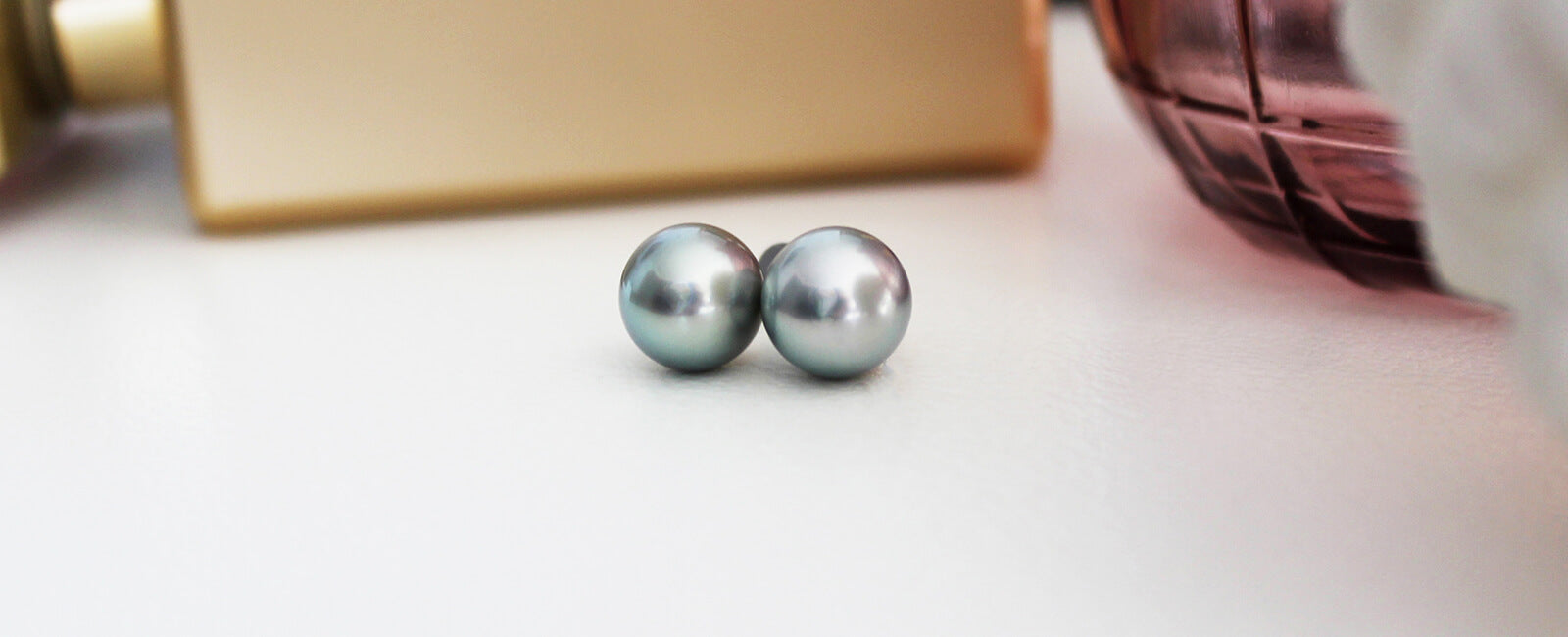
There’s no doubt that pearls are one of the most popular and beloved gems in the world. They range in prices from a $100 or less all the way up to thousands and even millions of dollars. So you may ask, “What makes some pearls worth more than the others?” and “How much are my pearls worth?” In order to answer these questions, you’ll need to understand what determines the value of a pearl and how the price is correlated to different types of pearls.
In this guide we’re going to show you everything you need to ascertain what your pearls are worth.
The Basic Rule To Buying Pearls
Before we dive right in, let’s take a quick look at the basic rule when it comes to buying pearls. Always, and always buy real pearls. Fake pearls made out of glass or plastic are worth literally nothing. Today, the imitation techniques are getting so sophisticated that some man-made beads can really fool your eyes. So make sure you check out these easy-to-use steps to ensure you’re buying the real deal.
The Value Of Natural Pearls vs. Cultured Pearls
If you’re an avid follower of luxury fashion and jewellery, you probably have noticed some of the spectacular record-breaking prices set by natural pearls in recent auctions.
In 2014, a strand of 53 natural saltwater pearls was sold for US$2.9million. In 2018, a large drop natural pearl pendant that belonged to the French Queen Marie Antoinette auctioned at Sotheby’s for a whopping US$32million, more than tripled the previous world auction record in 2011 for La Peregrina, a pearl that once belonged to Elizabeth Taylor.
Cultured pearls, on the other hand, are much less in price, ranging from just US$50 to over US$165,000.

Despite their huge price difference, both cultured and natural pearls are real pearls. They are grown from pearl-bearing oysters in either saltwater or freshwater. The pearl formation process is exactly the same for both natural and cultured pearls.
The only difference between the two lies in the external irritant that causes a pearl to form inside the oyster shell. In the case of natural pearls, this external intruder can be a grain of sand or a parasite, and the pearl is formed completely without any human assistance. Whereas for cultured pearls, the irritant is either a piece of tissue from another oyster or a bead that is placed by pearl farmers to encourage the growth of a pearl.
Now you can see why natural pearls are potentially more valuable than cultured pearls. This is because the occurrence of natural pearls is much rarer than cultured pearls. Almost all real pearls you see today are cultured.
But hold on – notice we use the word “potentially”. That’s right! Not all natural pearls are worth more than cultured pearls. Why? Because the beauty and value of a pearl relies on many other factors, such as size, shape, colour, lustre and nacre quality.

Regardless of how pearls are formed, whether natural or cultured, most pearls harvested have an average to low quality. Fine quality pearls are very rare. This is largely due to the nature of pearl growth inside the oyster. The oyster secretes nacre slowly to coat the intruder layers after layers. It is the same substance that makes mother-of-pearl, the shiny surface on the inner side of the shell. As an organic gem, these layers of nacre are not always evenly distributed to form a tight structure. Hence the quality varies drastically. In other words, most natural pearls, if found, rarely have qualities that worth a fortune.
The most valuable natural pearls that have achieved phenomenal prices, apart from their historical significance, all possess extraordinary qualities that make them beautiful. Most of the time, you’ll only find them in museums or high-end auctions.
So how can you tell if the pearls you own are natural or cultured? Unfortunately, you won’t be able to spot the difference without proper gemological and laboratory tests. Testing methods such as X-rays, energy-dispersive X-ray fluorescence, laser light, and Raman spectrometry will help separate natural from cultured pearls.
What Affects The Value Of A Pearl?
You may wish to valuate a real pearl necklace you have or would like to know if you’re getting a fair price for a new one you’re looking to buy. So what exactly affects the value of a pearl assuming there’s no historical significance attached to it?
In general, there’re 7 factors that affect the pearl value: shape, size, colour, lustre, surface quality, nacre quality and matching. Like the 4Cs of diamond valuation, the pearl’s 7 value factors are created by the Gemological Institute of America (GIA) to standardise pearl grading systems. They represent the main components of a pearl’s characteristics and beauty in a more balanced and comprehensive manner.
It’s worth noting that different pearl type has its own unique characteristics and benchmarks. Therefore, you cannot simply take each value factor and use it to assess two different types of pearls.
Now let’s delve deeper into the details below.
Price Comparison Guide On Different Types of Pearls
Depending on the waters they’re grown in, pearls can be divided into freshwater pearls and saltwater pearls (which are grown in sea water). There’re generally 3 types of saltwater pearls: Akoya, South Sea and Tahitian. Each pearl type, including freshwater, grows in a specific pearl-bearing oyster species in a unique habitat that is indigenous to certain regions of the world.
Generally speaking, saltwater pearls cost more than freshwater pearls. This is because saltwater pearl-bearing oysters can only grow 1 pearl (or 2 at the most in the case of Akoya) while freshwater pearl oysters can yield up to 50 pearls in one growth cycle.
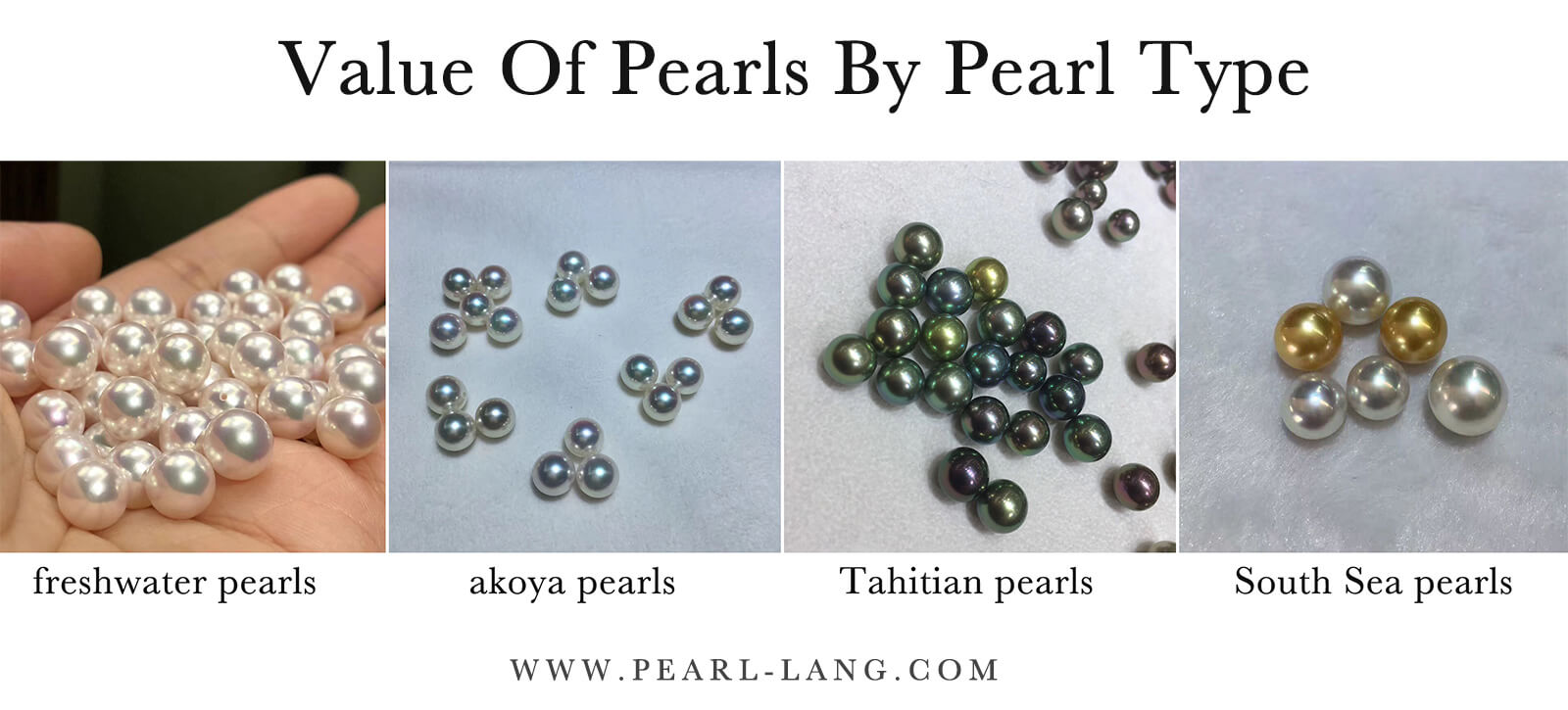
Below is a general pearl price guide that demonstrates what price ranges you can typically expect to find for each pearl type in 2024. Please note that we intentionally keep these ranges fairly broad to include pearls of different sizes, quality bands and jewellery types. As such, this should only be viewed as a general guideline. Each jeweller sets their own prices and they do vary.
Tahitian Pearls are considered the most exotic variety with the widest range of dark natural colours. Also known as the “black pearls” or “black South Sea pearl”, they are grown in the black-lipped oyster called Pinctada margaritifera cumingii, and are indigenous to French Polynesia, Fiji, the Sea of Cortez and the Cook Islands.
Typical Price Range:
- Low: below US$300
- Average: US$300 – US$650
- Fine Quality: US$2,000 – US$36,000 or more
Akoya Pearls are the classic, round white pearls that most people are familiar with. They’re mainly cultivated in Japan and China in a saltwater oyster species called Pinctada fucata martensii. Natural Akoya pearls grown in this species are extremely rare.
Typical Price Range:
- Low: below US$100
- Average: US$150 – US$450
- Fine Quality: US$1,500 – US$6,000 or more
Freshwater Pearls are the most widely available pearls seen in jewellery today. Hence, they’re the most affordable types of pearls in the market. Freshwater pearls are commonly grown inside the Hyriopsis cumingii mollusc in rivers, lakes and ponds in China, and their production has also started to grow in Southeast Asia in recent years.
Typical Price Range:
- Low: below US$30
- Average: US$30 – US$50
- Fine Quality: US$75 – US$5,000 or more
South Sea Pearls are the most prized cultured pearls in the world. They’re farmed in the largest pearl oyster Pinctada maxima in Australia, Burma, Indonesia and the Philippines.
Typical Price Range:
- Low: below US$200
- Average: US$250 – US$900
- Fine Quality: US$2,000 – US$135,000 or more
Natural Saltwater Pearls come from the Pinctada radiata and Pinctada margaritifera varieties and are native to the Arabian Gulf. These natural pearls are incredibly rare and their value can vary significantly from US$500 to over US$2,000 per pearl.
How Pearl Colour Impacts The Value Of Pearls?
Natural pearl colour is an important factor that affects the value of a pearl. It has three components: bodycolour, overtone, and orient.
Bodycolour is the overall dominant colour of a pearl. Overtone, the secondary colour, is the translucent colour that lies on top of the bodycolour. It’s usually present over the entire pearl surface or a large part of it. Orient appears when there’s more than one translucent colour or overtone over the bodycolour. It’s visible in a much smaller area on the pearl surface and can come in a form of iridescent rainbow colours.
All pearls have a main bodycolour, whether cultured or natural. But not all have overtone or orient. Pink overtone on white pearls are usually more valuable than those without. Pink to purple and blue overtones on dark green grey Tahitian black pearls are extremely rare.

What Are The Main Colours?
Tahitian pearls can come in a wide range of deep colours such as black, grey, green and more. The common colours for freshwater pearls are white, peach, pink and lavender. Akoya pearls come in the shades of white and silver. South Sea pearls are only available in white, silver, champagne and golden.
High Value Natural Pearl Colours By Pearl Type
- Tahitian - peacock, aubergine, blue, purple and brown
- Akoya – white and silver
- Freshwater – white and lavender
- South Sea – silver and golden
Try to look for the presence of overtone or orient the next time you look for fine quality pearls. And be very careful with those that are artificially coloured to mimic some of the high value colours mentioned above. Pearls with dye treatments are worth less than those with natural colours.
What Is The Most Valuable Pearl Shape?
Without a doubt, the most valuable shape for a pearl is perfectly round regardless of what kind of pearl it is. Now this is tricky. Because to be considered as a perfectly round pearl, the variance in diameter measured from several directions needs to be no more than 2%. This is the rarest shape in both cultured and natural pearls.

One thing you might not realise is that saltwater pearls like Akoya, South Sea and Tahitian are more likely to be round than freshwater pearls. Why? Because in saltwater pearls a round bead is inserted to encourage pearl to grow into a round shape whereas a piece of tissue is used in freshwater pearl cultivation. Now you can see - it is much rarer for a natural pearl to form a perfectly round shape than its cultured counterpart.
When other value factors are equal, the second most valuable shape is near-round, and then followed next in value by other symmetrical shapes like oval, button, drop and baroque.
How Pearl Size Impacts Its Value?
Are large pearls always more valuable? Not always. Pearl size cannot be valued on its own and must be judged by taking pearl type into account. In order to have a better understanding on how it affects the value of a pearl, let’s take a look at the typical range of sizes that each pearl type can grow into.
- Akoya – 2.0 mm to 10mm
- Freshwater – 4.0mm to 14mm
- Tahitian – 9.0mm to 14mm
- South Sea – 8.0mm to 20mm
Generally speaking, when you compare sizes within the same pearl type, the larger the pearl is, the more valuable it is when all other value factors are the same.
However, it is not true when valuating pearls of different varieties. As shown in the image below, you can easily see the difference in pearl sizes when you compare the size of the Tahitian oyster shell against that of the akoya pearl-bearing oyster.
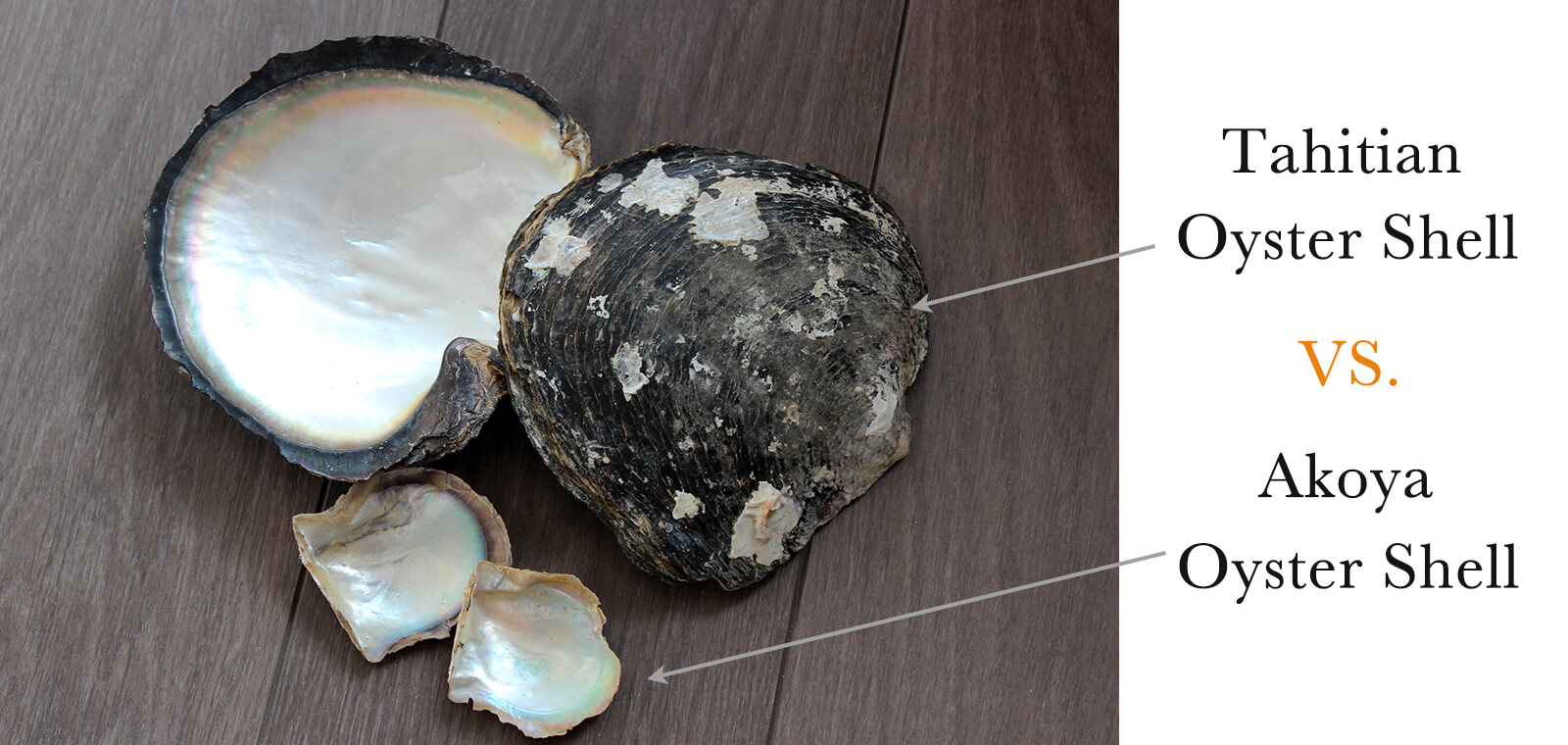
It is much rarer, for instance, to have a 10mm akoya pearl than a 10mm South Sea pearl. If all the other quality factors are equal, this akoya pearl would command a higher price than the South Sea pearl of the same size.
For round pearls, the size is determined by measuring the diameter of a drilled pearl perpendicular to the drill hole. For pearls of any other shapes, the size is made up of measurements for lengths, widths or depths. Pearl sizes are usually expressed in millimetres and rounded to the nearest 0.5mm.
How Pearl Lustre And Nacre Quality Affect The Value Of Pearls?
Pearl lustre is the intensity and sharpness of the light reflected from a pearl’s surface. In other words, it shows how bright and shiny a pearl is. Pearl lustre is considered the most important quality attribute of all the 7 pearl value factors. Fine quality pearls will always display high lustre with bright and sharp reflections.
There’re five categories of lustre prescribed by the Gemological Institute of America (GIA).
- Excellent – bright, sharp reflections; mirror-like appearance
- Very Good – bright and near sharp reflections
- Good – reflections are bright but not sharp
- Fair – reflections are weak and blurred
- Poor – reflections are dim and diffused
When other value factors are the same, the higher the lustre, the more valuable the pearl is. The lustre of some fine quality pearls can be so intense that it is almost metallic.
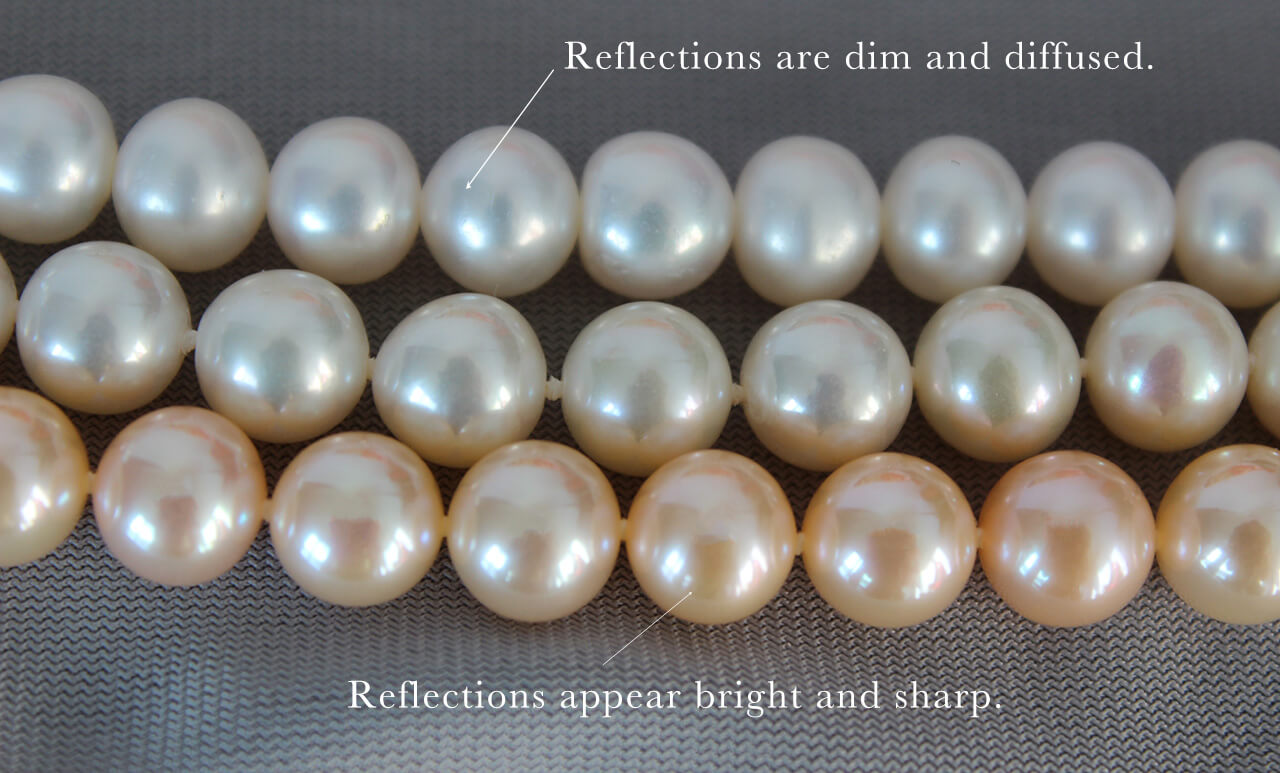
The quality of pearl lustre is directly linked with its nacre quality. During the pearl formation process, layers upon layers of nacre are slowly deposited inside the shell. Thick nacre with tight and uniform construction usually leads to high pearl lustre.
Nacre quality is also a key indicator of durability. The thicker the nacre is, the more lustrous and durable the pearl is. Hence the value goes up. Cultured freshwater and natural pearls have no nuclei and they’re made of nearly all nacre.
In the case of saltwater cultured pearls, bead nuclei are used in the pearl cultivation process. Therefore, those with thin nacre usually diminish in value. They often have poor lustre and are not durable.
Nacre Quality Classification:
- Acceptable – no chalky appearance; nucleus not noticeable
- Nucleus visible – show evidence of bead nucleus through nacre; the pearls will blink when you roll a strand of necklace under a strong light
- Chalky appearance – obviously dull looking
How Pearl Surface Affects A Pearl’s Worth?
As an organic gem, nearly all cultured and natural pearls have some degree of imperfections such as bumps, pits, scratches, spots, and wrinkles on their surface. Blemish-free pearls are extremely rare. So the fewer and less visible blemishes a pearl has, the higher its value when all the other value factors are equal.
Pearls that have no blemishes at all or contain very tiny surface characteristics that are not visible without using special equipment are said to have Clean Surface. Depending on the degree of their blemishes, pearls can be Lightly Spotted, Moderately Spotted and Heavily Spotted.
How Matching Impacts Price Of Pearls?
Finally, if you’re judging a piece made with more than 2 pearls, like in the example of pearl earrings, pearl necklace, or bracelet, you’ll want to check how well the pearls are matched in terms of shape, size, colour, lustre and surface quality. The more uniform the pearls are in a piece of jewellery based on these five value factors, the higher value the piece commands.
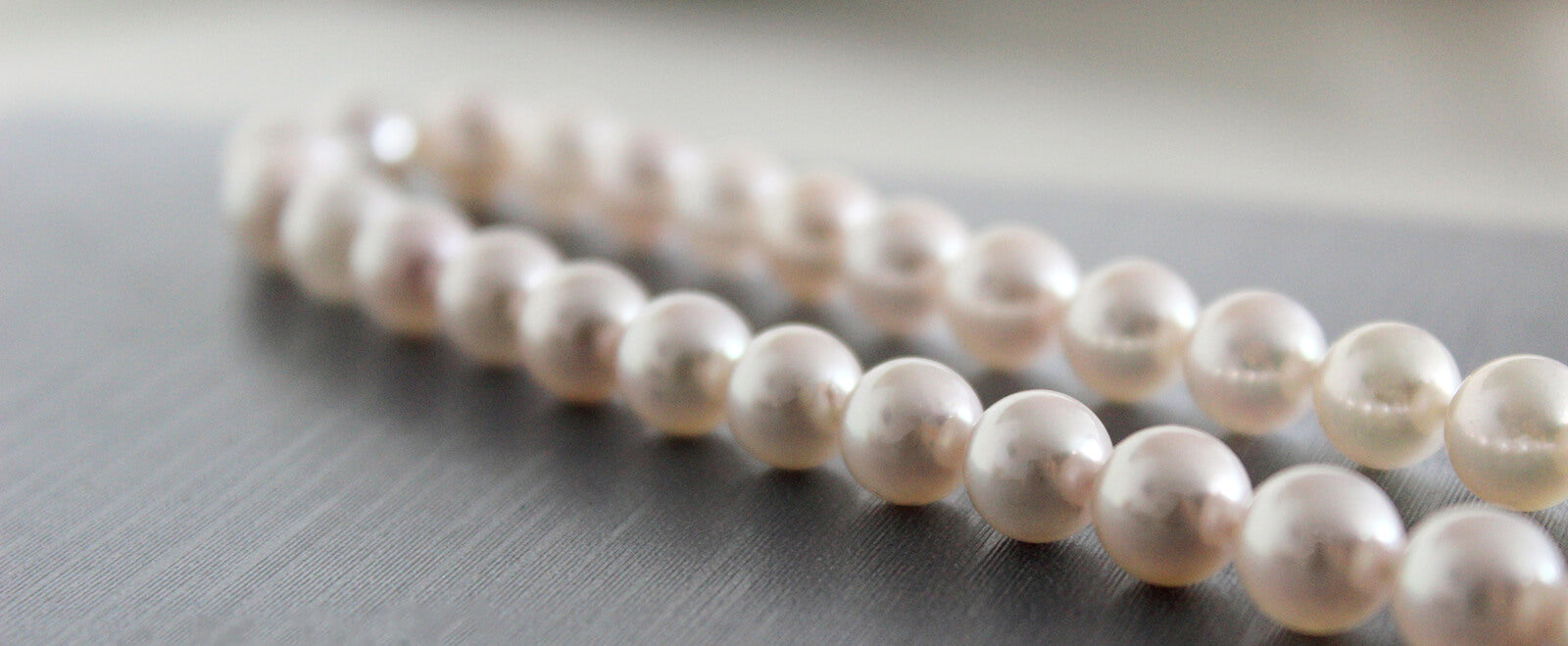
One thing to bear in mind – some jewellery intentionally mismatches pearls to achieve a specific look. What matters in this case is the visual harmony of the design rather than the uniformity mentioned above.
The Value of Conch Pearls and Melo Pearls

Unlike all the other pearls that are produced by bivalves, conch pearls and melo pearls are grown inside univalve molluscs that only have one shell and no hinge. They do not have the pearly lustre of true pearls and are often called calcareous concretions.
Indigenous to the Caribbean Sea and a small area of the Atlantic Ocean, natural conch pearls are extremely valuable. It is estimated that one pearl is found for every 10,000 conchs collected.
Conch pearls are usually small and rarely round. Most are oval or irregular shaped. The finest conch pearls are typically symmetrical in shades of pinks. They also come in colours like white, beige, and yellow. Chocolate-brown conch pearls are the rarest, but the ones that command the highest prices have salmon pink tones and saturated pink colours that create a flaming display of light. A strand of conch pearl necklace can fetch over US$400,000.
Melo pearls, or Melo melo pearls are found in the waters of Southern Asia. They’re produced by a marine snail whose shell is like a scroll. Melo pearls are often spherical and they can be very large. One of the biggest one ever discovered weighs over 397 carats (79.5g). In 2011, a large melo pearl was sold for US$30,500. The most sought-after colour for melo pearls is orange although it is known to fade over time. Melo pearls often show a flame-like structure. When it’s present and attractive, it can increase the pearl value.
A Smart Investment In Pearl Jewellery
Pearls are a smart investment. In fact, they’re having a massive come-back not only in high-end auctions but also among the eco-conscious luxury jewellery consumers.
Pearls are an organic, sustainable and virtually renewable gem. Pearl oysters are filter feeders that require pristine water conditions in order to produce high-quality pearls. They filter the water naturally, while removing heavy metals and nitrogen from the waters surrounding them. They are also recognised as an indicator species, meaning that any decline in water quality has a direct impact on oyster health, pearl quality, and thus our environment.
Because of their unique beauty and their inseparable bond between nature and human, pearls have held their value very well throughout centuries.
Finding The Sweet Spots Of Value
While those impressive million-dollar pearls may be out of reach, finding the sweet spots of value is actually not that difficult. When buying a piece of pearl jewellery, try using the information discussed in this guide. Remember to balance the rarity of the gems with your preferred styles and desirability. Make sure you buy from reputable or established stores and dealers who are specialised in pearls and pearl grading. If you’re in the market to get a valuation for how much your pearls are worth, always get a few quotes from expert appraisers.
At Pearl-Lang, every pearl has been individually chosen for its fine quality and unique beauty. Our stringent selection process is based on GIA’s 7 value factors. Only the best pearls from the top 1% of the pearl harvest are selected for making Pearl-Lang jewellery.




